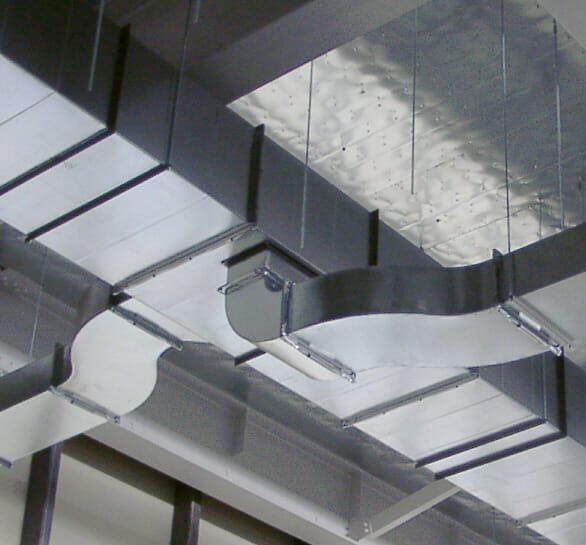News
Ventilation strategies
Ventilation is one of the most fundamental aspects of building design. Subpar air replacement methods may cause occupant discomfort, while inadequate ventilation can be downright hazardous to health. But a well-designed HVAC system can not only ensure occupant health, it can actually improve employee productivity.
Here are three ventilation strategies that, when thoughtfully designed, can ensure that a space is comfortable and livable.
Mechanical ventilation

Mechanical, or forced, ventilation is by far the most common ventilation system in industrialized countries today. Relying on an interconnected network of air handling units, ductwork, and discharge vents, mechanical ventilation systems forcibly pull air from the outside, heat or cool it, and force it into occupied spaces. Some systems also pull air from rooms and return it to the atmosphere.
Pros:
- When designed well, mechanical ventilation can deliver an indoor environment that is almost fully independent of the weather outside—predictable conditions year-round.
- The ubiquity of these systems means design, maintenance, and modification are relatively straightforward.
- A mechanical system is likely to cost less initially than other ventilation methods.
Cons:
- Mechanical systems offer a one-size-fits-all solution to a highly individualized problem. Every building is unique, but forced air systems tend to be somewhat generic.
- Mechanical systems can be noisy and may not equally distribute air throughout a space. Long stretches of ductwork can slow forced air almost to a halt, while rooms near the air handling unit might get blasted with cold or hot air.
- Artificially conditioned air can have a sterile, clinical quality.
Natural ventilation
Natural ventilation has been used for most of human history and, thanks to sophisticated engineering analysis and an increased appreciation for energy efficiency, it is enjoying a resurgence in popularity. A natural ventilation system relies on natural wind forces to move air through a building. When you open windows on opposite sides of your house to encourage cross-flow, you’re employing the simplest form of natural ventilation there is. More sophisticated approaches monitor the local weather and adjust openings accordingly. And in some climates, night cooling can flush a building with cold air at night to cool a thermal mass which will then absorb heat during the day.

Pros:
- Natural ventilation methods are inherently energy-efficient.
- Workers often prefer natural air to industrially-conditioned forced air.
- Natural ventilation techniques require fewer components and moving parts than a mechanical system and may be as simple as opening the right windows at the right times.
Cons:
- Dependence upon external conditions means natural ventilation may not be feasible in some locales or during certain times of the year.
- Without automation, natural ventilation requires that humans open and close openings according to outside conditions.
- Even otherwise-clean outside air may introduce unwanted odors.
Adaptive (demand-controlled) ventilation
Adaptive, or demand controlled, ventilation is neither strictly mechanical nor strictly natural, and in fact, a combination of these approaches can be used successfully. The key to demand-controlled ventilation is an active feedback control system that adapts to the actual occupancy level of a building and the demand for ventilation at any given time. Using a distributed array of thermometers, hygrometers, carbon dioxide sensors, and even motion detectors, a demand-controlled ventilation system attempts to deliver custom heating, cooling, and air replacement according to measured demand. While such systems entail a greater initial cost, they may pay for themselves over the life of a building through improved energy efficiency.
Pros:
- Much like an on-demand hot water heater, adaptive climate control systems are engaged only when needed (temporal specificity).
- Adaptive systems deliver heating, cooling, and ventilation only to those parts of the building that need it (spatial specificity).
- Well-designed systems can take advantage of natural ventilation when it’s feasible and fall back on mechanical systems when necessary.
Cons:
- Considerable up-front complexity and cost may be prohibitive, especially for small businesses with tight budgets.
- Occupancy levels are surprisingly difficult to estimate automatically. A simple motion-triggered sensor, for example, can’t differentiate between one person and forty.
- Carbon dioxide sensors are very complex, and even with good equipment, estimating CO2 concentrations is quite difficult.
Unless you work outside, there’s a good chance your business relies on predictable, effective ventilation. When building designers anticipate these needs early on, experienced engineers can deliver innovative approaches that reduce costs, improve efficiency, and, best of all, make workers happy, healthy, and comfortable.
